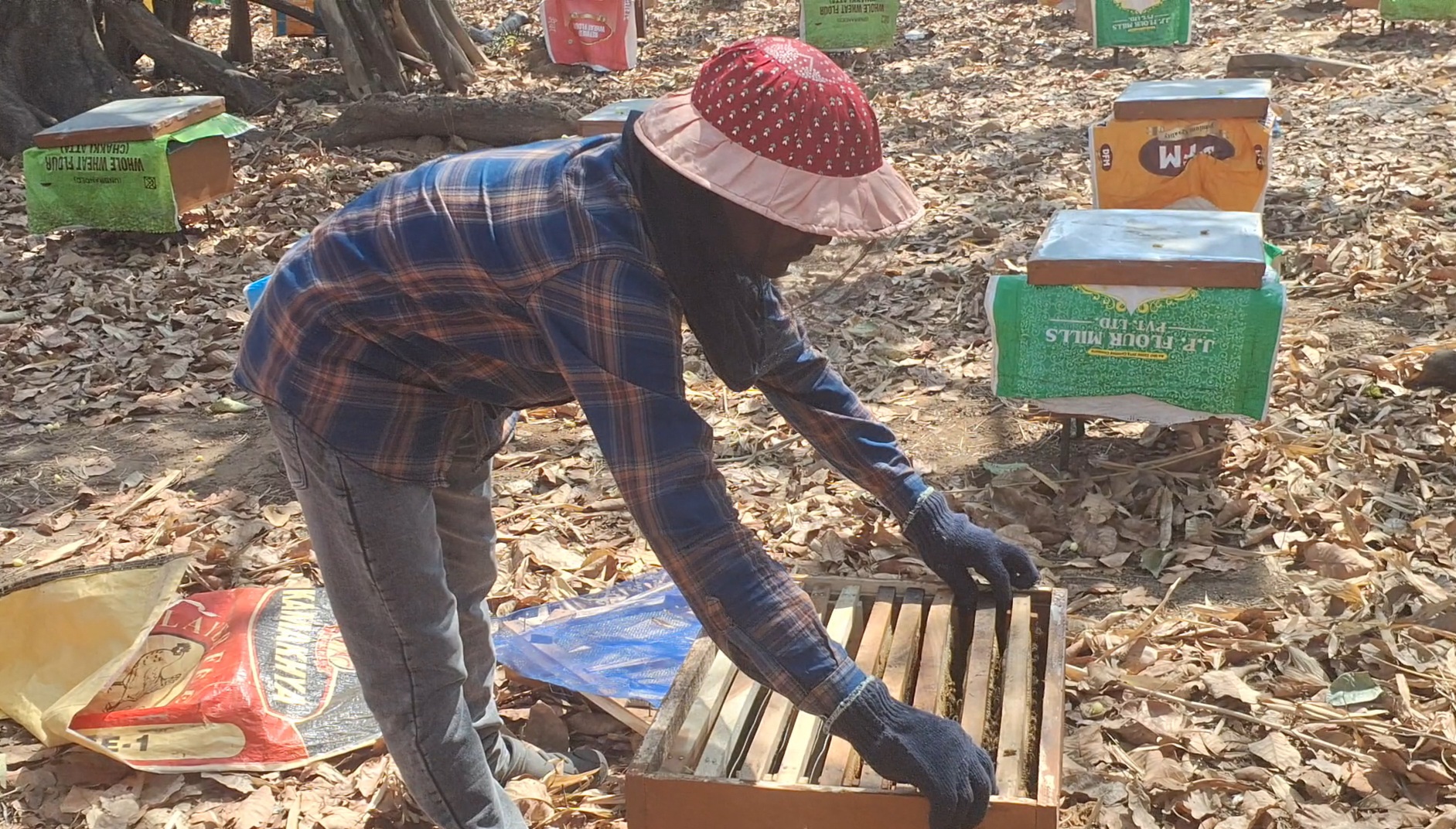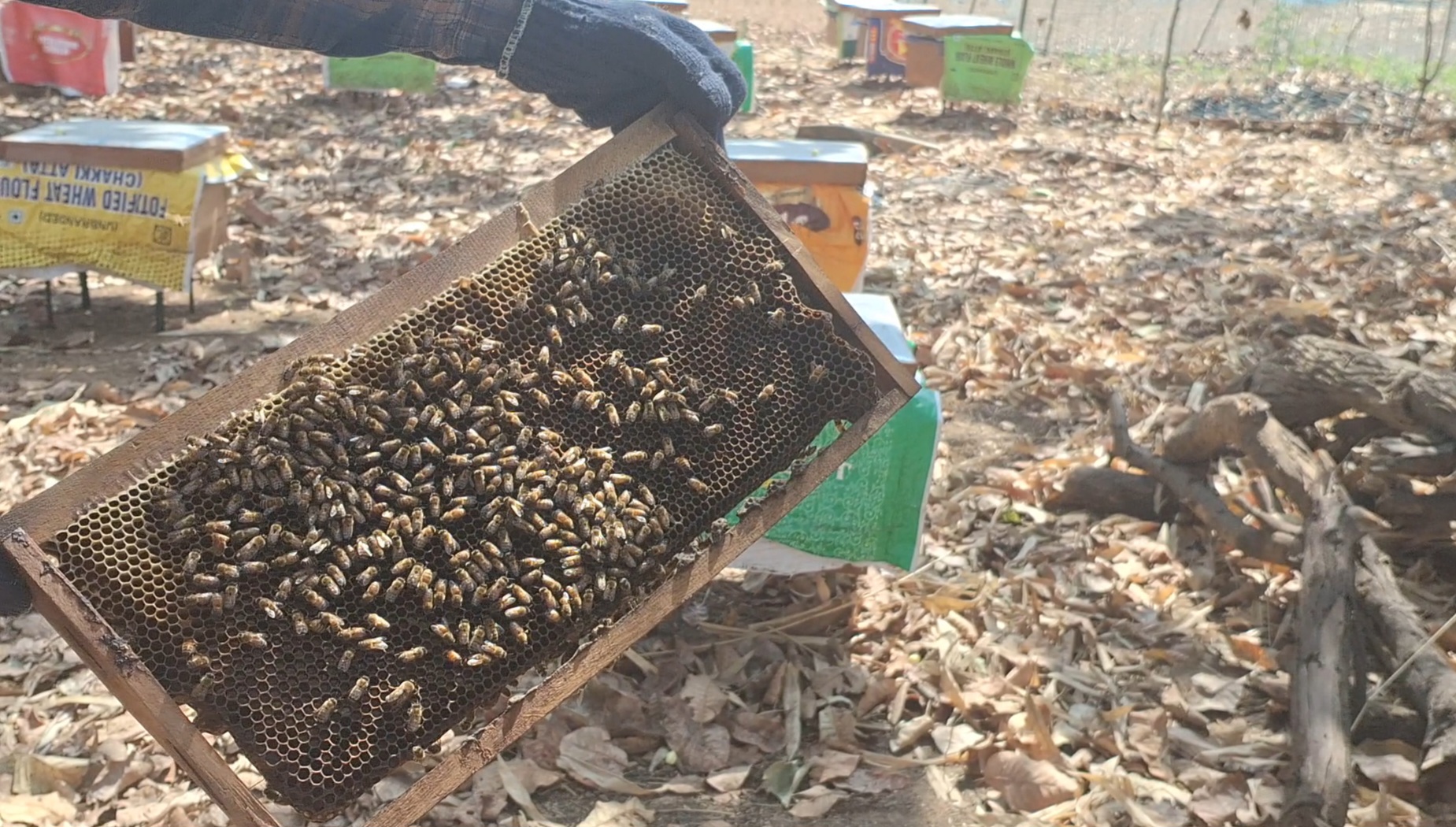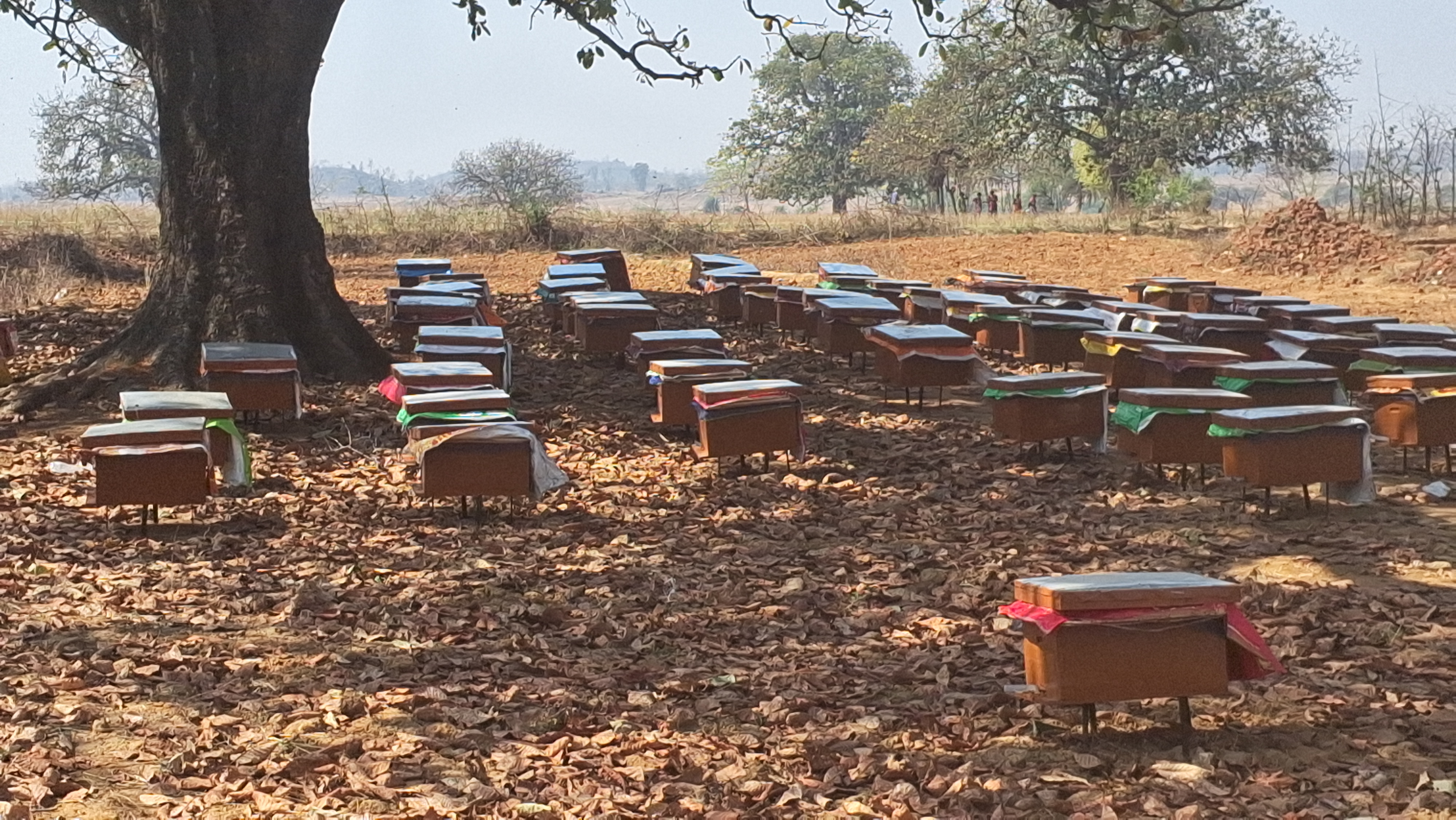Sweet Honey Wards Off Opium Menace In Tribal-Dominated Jharkhand's Palamu
In the Palamu district of Jharkhand, many areas, which have been struggling with the problem of opium cultivation for long, are now witnessing a steady change for the better. The sweetness of honey is taking the better of the allure of opium in these areas.
Manatu, an area in Palamu infamous for opium cultivation, has been witnessing a change now. This change in this area is still in its initial stages but its effect is being seen on a large scale. Here, the tribal families have started producing honey in a big way. About 28 tribal families in Bhitadiha of Manatu and 26 tribal families in Daldaliya area are actively involved in beekeeping.
The Palamu District Horticulture Department has been providing support and beekeeping related material to the local villagers. On the other hand, these beekeeping families are receiving training from the Jharkhand State Livelihood Promotion Society.
Honey making in opium areas
In 2025, opium crop grown in more than 400 acres in the Manatu area of Palamu has been destroyed. The area of Daldaliya has also been infamous for opium cultivation. Here also, about 26 families have joined beekeeping. Sitaram Oraon of Manatu said that getting employment at the local level has been a big challenge. He was not getting employment. After which he has started beekeeping. The Horticulture Department and JSLPS have helped him in this effort.

Vinod from the same village said that it is very important to change the identity of the area, which has been infamous for many things. This area has been in the news for many problems from opium cultivation to Naxalite-related incidents, he said. It feels good that the people of the area are producing honey by beekeeping.
Sarita Devi from Bhitadiha said that after beekeeping, her problems have started to go away one by one.
Each family producing 70 kg honey
Three months ago, the villagers of Manatu were connected to beekeeping through the Horticulture Department and the Jharkhand State Livelihood Promotion Society (JSLPS). Every family has produced about 70 kg of honey.

On the new wave of beekeeping in the area, Palamu District Horticulture Officer Shailendra Kumar said that results have started showing in just three months, and changes have started appearing in the families who are getting associated with beekeeping. He said that the scope of beekeeping will be increased in the coming days. Additional funds will also requested from the government to encourage the villagers to take to beekeeping in greater numbers. In an area where there is a huge need for change, honey production has started to show results.
JSLPS's Manatu BPO Kumari Namrata said that the villagers are currently selling honey locally. Later it will be linked to Palash and the market will also be made available, she said.


댓글
댓글 쓰기